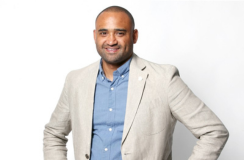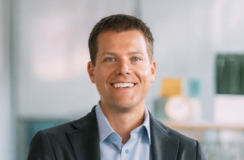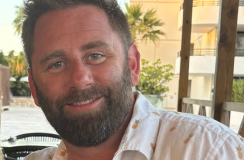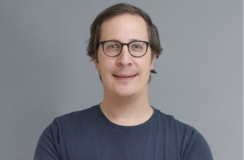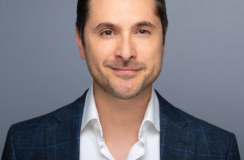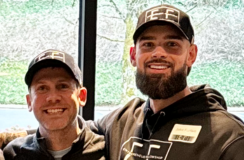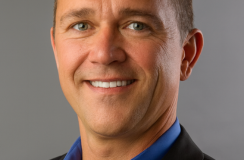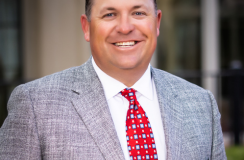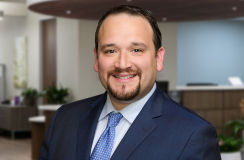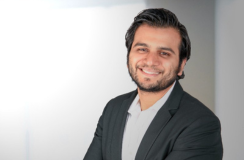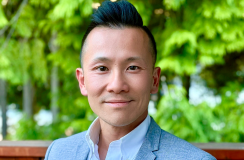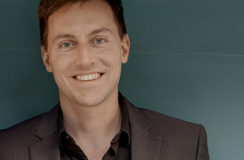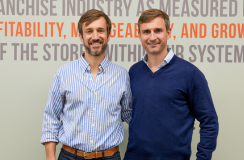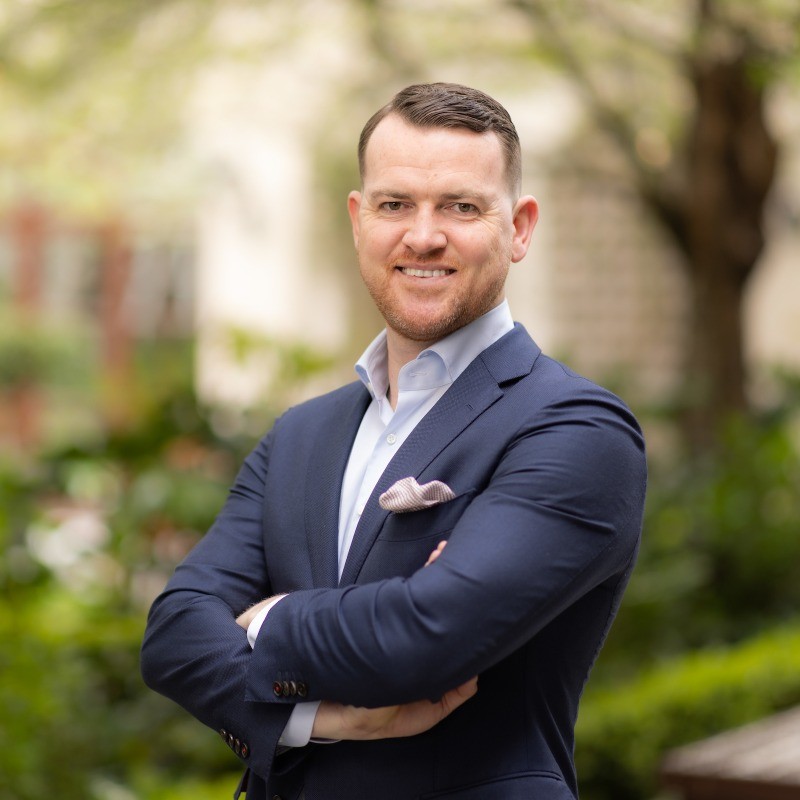[00:00:00 - 00:05:22]
Will Smith: Today's story is not a pure play ETA story because our guest didn't buy his business. Nick Keegan founded his software business based on an idea he was enamored with. Unfortunately, the business limped along for years, barely surviving. Eventually, they pivoted the business model, which helped, but it still wasn't going to yield very impressive growth. It was an acquisition.
After that business model pivot, that was. The real inflection point. It had taken mail metrics seven years to crack 1 million euros in annual revenue. It took them just 5 more to. Crack 200 million euros in annual revenue.
Largely thanks to acquisitions that kept increasing in size. So while acquisition didn't get Nick into. His business, as it does for most. Of my guests, it did transform Mail Metrics into what it is today, an.
Aggressive acquirer with a line of sight to a billion euros per year. Please enjoy this fascinating ride with Nick Keegan, founder of Mail Metrics.
Deal Terms to buy a business with an SBA loan and investors are still a bit all over the place. First time searchers meet bespoke documents and slow bank and legal reviews. It's a status quo that wastes time and money for everybody. Well, the team at Shareholder Ventures have released Pact P A C T in an effort to fix this mess. The vision is to simplify and standardize terms for SBA searchers raising equity from investors for their acquisitions.
PAC stands for Partnership Acquisition Common Sense Terms, and it's essentially a legal framework, a set of documents that is free and meant to set an industry baseline for terms that balance the interests of SBA searchers and investors. Tim Erickson at Shareholder Ventures and attorney and Pact co author Joe Spina will present a webinar to tomorrow Tuesday, walking you through Pack and how to use it. This is a very valuable session that will educate you on what could become a standard in our world. It's tomorrow Tuesday, October 7th, noon Eastern. Link to register for the webinar is right at the top of this episode's show notes or on the Acquiring Minds homepage.
Acquiring Minds co. Also, as you know, plenty of buyers fail before they ever reach loi. Not because they lack capital or the skill set to be an owner, but because they approach brokers and sellers the wrong way. This Thursday, Athena Simpson, founder of AquaMatch, is returning for part two of a webinar series on how to build a personal buyer brand that makes you a compelling option for the broker and seller. Thursday's session is about using emotional intelligence to create lasting trust so brokers are open doors for you sellers take you seriously and you move from being screened out to being the one who gets chosen. EQ can be the game changer that helps you win deals even if you're not the highest bidder.
That webinar is tactical EQ to win over sellers and brokers and it's this Thursday, October 9th, noon Eastern. Register at the link in today's show notes or on the Acquiring Minds homepage. Acquiring Minds co Welcome to Acquiring Minds, a podcast about buying businesses. My name is Will Smith. Acquiring an existing business is an awesome opportunity for many entrepreneurs, and on this.
Podcast I talk to the people who do it. What do the following Acquiring Minds guests. All have in common? Doug Johns, Morley Desai, Tim Erickson, Chirag Shah, Shane Ursam they all went through the Acquisition Lab, the accelerator in community. For people serious about buying a business.
But they represent just a sliver of. The Lab's success stories. The number of deals across the lab's cohorts now stands at over 120, with over $300 million in aggregate transaction value. The Acquisition Lab was founded by Walker. Deibel, author of Buy Then Build, the.
Book that introduced so many of you to the very idea of buying a business. The Lab offers a month long, intensive, almost daily Q and A sessions with advisors, live deal reviews with Walker, Deal team introductions, and in an active community of serious searchers. Check out acquisition lab.com link in the notes or email the lab's co founder, Chelsea Wood Chelsea Buy, then build.com. Nick Keegan welcome to Acquiring Minds. Thanks Will.
[00:05:22 - 00:05:37]
Nick Keegan: Great to be here. Nick, your story is a bit different than our usual. You started your business as opposed to having bought it. However, buying a business later in your. Journey and the pivot that represented was.
[00:05:37 - 00:05:58]
Will Smith: Key to the very impressive growth that you've enjoyed since. So I think it's fair to say that Mail Metrics 2.0, if you will, is all about entrepreneurship through acquisition. We'll get there. Start us off please, Nick, with some. Background on you and then we'll turn to the origin story of Mail Metrics and go from there.
[00:05:59 - 00:07:20]
Nick Keegan: Sure. So yeah, look, it's great to to be here. I suppose in terms of in a background from myself. This is my first business, started this business when I was 24.
Prior to that, my goals and ambitions I suppose was to join the Irish Defense Forces. I had a I suppose I aspired to be an army officer and was working towards that goal. I had joined the army reserve and served 11 years in the Army Reserve, so my career path was firmly going in that direction. But had an idea for a business with a friend of mine, which became Mail Metrics ultimately. And the way the Irish army recruitment works is they have a recruitment competition once a year and quite difficult to actually get into, believe it or not, because it's such a small country and they only accept so many people.
So between, between competitions each year, you'd be trying to figure out what you do with the next year of your life. And we had an idea for this business and we said we should, let's do this and play around with it for the summer and see where it goes. And my life just went on a totally different trajectory and, and we're about. To hear about the business. But to be clear about you personally, you were not a, what we would call over here, like a lemonade stand kid.
[00:07:20 - 00:07:50]
Will Smith: You, you weren't, you didn't have an entrepreneurial bent that had been demonstrated before. You were, you aspired to be a military man. It's funny, actually, because I, I, looking back now, I did, but I probably didn't realize that at the time. So when I think back to my, my childhood, I would have been the, the kid out with the, the lawnmower, knocking on doors to cut people's grass or washing cars or what. My father was an entre.
[00:07:50 - 00:08:19]
Nick Keegan: My father was also in the military, but after that became an entrepreneur, successful entrepreneur in his own right. And I'd often have business ideas, right. So, you know, it'd be a great business. And I'd go and chat to him about it and he tell me why that's a terrible idea or not, as the case may be. So, But I never actually identified in myself that was entrepreneurial traits until I look back, until now, when I look back and I, I, I see that now, you know, Great, okay, so what.
[00:08:19 - 00:09:00]
Will Smith: Was this idea that you guys figured you'd play around with for a summer or a year between trying to get into the military? Yeah, like, absolutely, totally naive, right, that we could do anything in the summer. But we had an idea for a mobile app, and this was around 2013, and we thought it was a bit of a pain when you first move out of your home and you're getting your first apartment or you're, you're renting for the first time, you have to manage all these household bills. So you'll, you'll sign up for Internet, gas, electricity, tv, utilities, et cetera. And in order to get all of your bills, you needed to log into your phone provider to get your phone bill.
[00:09:00 - 00:09:51]
Nick Keegan: You'd go to your bank, online banking to get your bank statement. And that was just bit of a pain in the ass. So we said, what if we had one app on your phone which could take a feed from all of these providers and essentially consolidate all of your online bills and statements into one easy to use app. So it's like a consolidation play around your, your online billing, essentially.
So we decided, let's just give this a go and see if we can, see if we can make a go with this. And one thing led to another and somehow over the next two years, we raised 700,000 and seed funding, hired a couple of developers and started to build out this app. Now ultimately, it was an absolutely terrible idea and it totally, it, it, it. It has a lot. I mean, intuitively, you know, I'm like, yes, I have that problem.
[00:09:51 - 00:10:19]
Will Smith: I have all these sites I need to log in to all, you know, some of them, you know, sort of not sort of utility businesses running these horrible websites. So, you know, would love to have a centralized feed of this stuff. Yeah, people still say that to me to this day and say, is now not a better time to give that a crack? But it, but genuinely it's a terrible idea because it solves your problem as a consumer. And that's the angle that we approached it from.
[00:10:19 - 00:11:09]
Nick Keegan: We were trying to solve a problem that we had, but believe it or not, we never really considered who owned the problem actually and who was going to pay us for this service. Because whilst you might say it'd be really convenient to have one app where I'll get all of my household bills, you probably wouldn't pay for that. Right. At least very much. You wouldn't pay very much for it.
And so we were trying to build a model whereby the utilities and the banks would pay us. And our hypothesis was that because it was so difficult to manage all of these different online accounts that you have, if you had one place to register, these companies would experience higher adoption for digital billing because this was made easier. And that was our whole hypothesis. And they want. So that was their incentive.
[00:11:09 - 00:11:22]
Will Smith: They, in theory, they would really like this path to converting more of their customers to digital billing. Yes. Because it's cheaper than sending bills through the mail. Yep, yep. Boy, will that come back to play a role.
[00:11:22 - 00:12:58]
Nick Keegan: Yeah, yeah, yeah, exactly.
But we thought this was such a good idea, so revolutionary that we shouldn't tell anybody about it. Right. Because somebody will steal it. So we went and built this product in stealth mode effectively. And then once we had a minimum viable product, we basically started talking to the utilities and the banks.
And they were like, well, we'd never use this because we don't want anybody going to your app. We want them going to our app where we can upsell and cross sell. And we don't want to lose that relationship with the customer by putting the third party in the middle. We were like, oh, shit, okay. We never thought about that.
And there was other companies that made that model, like, successful, if you want to call it that, in terms of. They got like hundreds of thousands or millions of users signed up. But their model was different, whereby you as a user would give all your usernames and passwords and they would scrape the bills and consolidate for you. But ultimately they could never really generate any revenue. So we were trying to come at it from the other way where arguably there was a better business model because somebody would, the, the companies would pay us, but they just didn't want to entertain that.
Yeah, so we were pretty much treat. The first three years of the business, we were trying to make this. We were flogging a dead horse basically, trying to make this work. And we just couldn't get it off the ground until we effectively pivoted in the direction of where we're going now. And.
[00:12:58 - 00:13:11]
Will Smith: And so did you spend down that 700,000 in euro? 700,000? Yeah, pretty much. Like by the end of year three, we were running on fumes. So we were really on.
[00:13:11 - 00:14:08]
Nick Keegan: On Death Star, the business was, was, was going nowhere fast. We had hired a relatively small team. Like maybe we had four people working. Three, three or four people working for us, including the three founders of the business. So I founded the business with a guy called Marcin Journas, Polish guy.
He's the technical brains behind the operation. And then his brother Pavel joined us within the first year as a second technical co founder. So when we hired the team, we hired them out in Poland because the, the, the cost of employing FTEs out there was. There was a lot of our, the big arbitrage between Ireland and, and Poland at the time, which has changed a lot since then. But we had maybe, yeah, four employees working under us and ultimately had to let all of them go except one developer towards the end just to keep some cash in the bank.
[00:14:09 - 00:14:18]
Will Smith: So what was the kind of the inception here of, of the new model of. Of. Of Mail Metrics 2.0. Exceptionally good luck, I think. I have to.
[00:14:18 - 00:16:58]
Nick Keegan: To be honest, I'd like to think that we went away into a quiet room and took out a whiteboard and came up with this fantastic idea. We tried that a couple of Times, and we all just argued with each other and couldn't agree, which was the direction we should go. But because the idea was novel at the time, we had managed to get an audience with most of the big banks, insurance companies, utilities. Because we were young and we had an interesting idea, they'd meet us and then, you know, ultimately tell us that they weren't interested. But we managed to get those initial meetings set up.
And then it was 2015, so we're into year three now, and literally, you know, we have no customers. So I'd come into work on a Monday morning and I'd have nothing to do. Right? Very, very difficult time. My phone rings and it's a big insurance company, big British insurance company, but with operations in Ireland.
And they said, you came in here maybe a year and a half ago selling some digital communications app. We have a. An rfp, like a tender coming to market. Basically. They said they had a mail room in their basement where they printed and mailed millions of policy documents every year to their customers.
They had no means to communicate with their customers digitally. So they were going to look for bids for a company that could take over that mail room, get it out of their premises so that, you know, they didn't have this sort of big printing operation in their basement and then sort all that out. So the right documents were going to the right people because it was a bit of a mess. And they were having regulatory fines and breaches because they were sending their own documents out. And then they wanted somebody that could help them to digitize those communications, to give their customers more of a digital journey or experience.
And they said, like, remind us, is that the kind of thing you guys do? And I just said, that's exactly what we do. And we just pivoted in that direction, basically. So we told them that we wanted to go for the rfp, and because we literally had nothing else to do, we just poured our heart and soul into writing the absolute best tender response we could. And this contract, whilst it was a lifesaver for us, luckily, was probably less interesting for some of the larger incumbents.
So they probably just treated it as any other bid, whereas we really went out, you know, fought for toot nail and ultimately won that bid. And, and Nick, when you say incumbents, what. What did some of the incumbents look like? What, what. What was.
[00:16:58 - 00:17:25]
Will Smith: What is this industry or this category? So we can, like, we describe ourselves as a customer communications platform. So we're a software platform for, you know, digitizing, sort of regulated customer communication. So your bank statement, your insurance renewal, all those sort of key documents that your service providers will send to you. Our industry is you can look at it in two silos.
[00:17:25 - 00:19:09]
Nick Keegan: You have the very essential but more traditional side of the business, which are sort of large, almost BPO business process outsource providers that have a secure print facility where all your bank statements and so on are printed and mailed from. More often than not, the bank doesn't actually send you those directly. They've given that to a sort of highly certified secure print provider. So this is very different than, you know, printing a takeaway, a menu for like a food takeaway or anything like that. It's high security, a lot of technology and data involved.
But ultimately your banking transactions end up on a piece of paper. They're stuffed into an envelope in a fully lights out, automated process and it goes out the door through the usps, for example. And then on the other side of the spectrum, you've got sort of technology providers that provide digital communication solutions or you know, document composition, which is essentially the process mail merge, if you're familiar with the mail merge process, taking a database and merging with a template.
So the incumbents that I refer to are more on the more legacy side of the business, these kind of large what we call transactional print businesses. So that's who we were competing with. Whereas we were a, we were technology guys, we were a software business. So we came at it from a quite a different angle, I suppose, which was the key insight for us when we won that tender. You know that one of the most common levers to pull in a target acquisition is technology updating the systems of a business that may still be running off a spreadsheet or even pen and paper.
[00:19:09 - 00:21:14]
Will Smith: But tech is complicated with tons of solutions out there. So choosing the right cloud platform, CRM, telephony, compliance and cybersecurity, not to mention implementing all that, is a job in itself. Acquiring minds Guest Nick Akers knows this firsthand. As a former searcher who now owns Inzo Technologies, Nick has seen the tech challenges searchers face when acquiring businesses. His team at Inzo regularly works with searchers and their acquisitions, offering a complimentary IT audit of the target company.
Nick takes a personal interest in all their searcher clients, drawing from his own experience in the search phase. Enzo dates back to 1989. So this is a company that has managed the tech for hundreds of small businesses over decades. And one last thing, no long term contracts with Enzo. A big differentiator.
Check out inzotechnologies.com I N Z O. Or email Nick directly@nicknzotechnologies.com and don't forget to tell them you're a searcher. I doubt I'm the first to point this out, Nick, but that there's a classic business story from Techland where Bill Gates is talking to IBM and they want an operating system for their new PC. I think this is the origin of Ms. DOS or BASIC or something. And he says, we got it, we'll provide it to you.
And then of course, he had nothing and scrambled. The team at Microsoft scrambled to deliver that and it ended up being, of course, the deal of his lifetime because it got the distribution onto these PCs and he retained all the rights to the software, having the insight that software was going to be more valuable than hardware, which was a big insight at the time. I digress. But it sure does feel like when you, when, you know, opportunity knocks, you just say yes. Sort of, sort of vibe that's like.
[00:21:14 - 00:21:44]
Nick Keegan: That'S, I'm, I'm big into that. Right? You kind of say yes and you figure it out after. And I don't think there's ever been a time where we have sort of sold the dream and not delivered in the end. So I think it's important if you're taking that approach, you have some kind of confidence in your ability to deliver.
Of course. But opportunity fell on our lap. You know, we just knew that we could do a good job here. Yeah, we just went for it. You were also desperate.
[00:21:45 - 00:22:01]
Will Smith: You were also operating from a position of desperation. So you kind of. This was the last, this was a kind of a hail Mary. Within six to 12 months, we would have been out of business. Like, you know, you often hear those stories and say, like, oh, you know, that makes for a good story, but it's the truth.
[00:22:02 - 00:23:19]
Nick Keegan: We were, we had no customers and we were, we had, we'd raised 700 grand, like two and a half years or, you know, two years prior. So we're running out of cash pretty quickly. So we needed this contract and we, we had some technology developed from the previous business. Like, it wasn't like we were starting from scratch, but we effectively designed the system that we wanted to build to solve this particular customer's problem. Problem.
And we sold that like it was already fully formed, fully functioning. But we knew that we had a transition period. We structured the project in such a way that we bought ourselves some time for the technical delivery elements of it, and we just gave ourselves enough time to build a minimum viable product that would meet the customer's needs. And then we knew we could iterate from there. And that's exactly what happened.
Ultimately we won the contract and within, I believe it was 16 weeks, we had the customer generating revenue. And like these are pretty sizable contracts. So that one contract alone, like we were still loss making, but it was enough. We're generating enough cash to keep us moving, you know. And so that you said within 16 weeks.
[00:23:19 - 00:23:33]
Will Smith: So now we're in what, late 2015? 2016. Yeah. So like 2013, 2014, no revenue. 2015, about €140,000 build.
[00:23:34 - 00:24:04]
Nick Keegan: But we didn't start billing until, you know, Q4. I can't remember exactly when, but. Yeah, yeah. So as we, as we go into 2016, we probably made 400 grand in revenue. Okay.
And for a business with, you know, four or five people, that was okay, you know. Yeah, yeah. And so then at this point, the business model is what you described. So, so what, what is the business. What is.
[00:24:04 - 00:24:20]
Will Smith: So this is kind of. So this is the, this is maybe, maybe your acquisition is kind of mail metrics version 3.0. I kept saying 2.0, but there's this interim period now from kind of 2016 where you're doing a. What say it explicitly for us. Yeah, so maybe I'll.
[00:24:20 - 00:26:17]
Nick Keegan: Yeah, just elaborate on that. So Mail Metrics as a business was set up to be a technology platform that would take data from a, an insurance mainframe system, for example, and it would create all their documentation, all their personalized insurance renewals, policy documents, and distribute them electronically to their customers. So you'd log into a portal and you could see the PDFs of your insurance documents, or you'd get an email with an attachment and you were able to sort of track all those communications, make sure they were delivered to the right person at the right time and they were compliant. However, a lot of people don't want to receive digital or communications or they just don't engage. And so you need to send them a letter through the mail.
And we didn't have any capability to print and mail a letter, so we partnered with a printing business, one of these incumbents that I mentioned earlier. And anything that couldn't be sent electronically was sent to this print business. So effectively every outbound communication that left this insurance company, whether through digital or print channels, was routed through our platform and we outsourced the printed element to a third party printing company. That's essentially what the platform did in the early days. What that gave to the customer was allowed them to outsource a non core activity.
It Allowed them to save money because we could do it better, faster, more automated, and by digitizing higher volume of their outbound communications, they saved a lot of money on postage, effectively stamps. So that was the model. And once we won that first customer, we thought, okay, well, maybe this is, maybe this is the business and maybe we can replicate this across other insurance companies. Okay, great. And so this now is a business model that is working.
[00:26:17 - 00:26:47]
Will Smith: You double down on it, get more such customers, take us over the next couple of years and, and, and also specifically the trajectory of revenue as you, as you grow into this or on this model. Sure. So probably about 400 grand in revenue in 2016. That would have increased to 520 in 2017, 670,000 in 2018. And that's when we became profitable for the first time.
[00:26:48 - 00:28:16]
Nick Keegan: Now I'm talking like €4,000 profit. But we were profitable. And paying yourselves as founders, paying yourselves salaries. Yeah, but like very, very poorly. We were the, arguably the least paid in the business.
I don't know, we'll be paying ourselves €30,000 a year or something like that.
So, yeah, look, we weren't, we weren't making a lot of money from this. But finally we, we were starting to see some growth. And then it was 2019 was a big milestone for us. We did 1.3 million in revenue, so we nearly doubled in, in that year. And we did maybe like 100 grand net profit.
So I suppose it was a, we were growing, but it all felt very slow because we went, it was seven years to break a million in, in revenue. Right. So we were, we were certainly weren't a rocket ship. Like we were written off by everybody. I think our early investors were probably not too excited about getting a return from the business.
But I suppose it was a big milestone for us to break a, a million in, in revenue.
2020, then we nearly doubled. So we got the 2 million in revenue, doubled earnings to 200,000. So it was growing at a steady enough clip. Well, well, hold on there. Because the doubling in a single year, that start.
[00:28:16 - 00:28:44]
Will Smith: That sounds like acceleration. Like that's quite promising. Yeah, but our customers are like, our customer contracts are pretty large. So that doubling was probably one contract that we won, you know, because it, because of the types of communications that we're sending, these companies are pretty cautious for us. They don't just give it to anybody.
[00:28:44 - 00:29:41]
Nick Keegan: And we needed to build credibility over time to really start to be taken seriously. And the more customers we want, even if there were smaller customers, we started to build credibility over time. And so it'll get to the point where you'll win a slightly bigger one and a bigger one, and to the point where we're at now where we can pitch for the largest banks in Ireland and the uk and it's not a problem. So we may have won one contract that allowed us to kind of level up to that extent, but we may not have had predictability of where we were going to go the next year. You know, so we had a model.
It worked. We had customers that were happy, but we probably didn't feel we had a sort of scalable, repeatable business model at that point because customer acquisition was just so hard due to the regulated nature and the conservatism of the customers. Yeah. So now we. Now we do pivot into the.
[00:29:41 - 00:29:55]
Will Smith: The real. The real pivot. Let's hear how that unfolded. I mentioned earlier in the story that we partnered with a printing business to manage the. The print element of the communications that we're sending for our customers.
[00:29:56 - 00:30:40]
Nick Keegan: And we had set that deal up terribly because, again, like, we'd no experience. We didn't really know what we were doing at the time. So we would go and win all of these contracts and we would just arrive to this print partner of ours and just give them all the print work. And they were making cream off the back of this relationship, and we were taking no commission, nothing. We just never even considered that.
We just thought that this was a problem we need to solve. We need someone to print these letters. But if you think about a bank that mails 100% of their communications, day one, when we onboard that customer, all the revenue is coming through the print side. We're giving that all that away. And it takes time for us to get the digitization percentage up for us to start to make some money.
[00:30:41 - 00:30:58]
Will Smith: Wait, what do you mean there, Nick? Because all of their customers are currently doing paper, and over time, you'll convert some subset of their customers over to digital, little by little by little. And only as you do that, do you guys start generating revenue. Well, that's. That's how the model was when we previous.
[00:30:58 - 00:33:34]
Nick Keegan: Before we, you know, when we first set it up. Yeah. So the print guys would get the print portion of the contract, we would get the digital portion of the contract. But as you say, if a bank is pretty legacy and they send 100% of their communications through the mail, like, we made some money, but the lion's share was going to the printing partners of ours. Okay.
So we quickly realized the error in our ways. But, you know, we'd set this contract up in that way. We had a number of large opportunities coming down the line, like really big contracts. And we realized that a lot of the value from those contracts was going to go to our partner. And I started to think, you know, maybe we should own the print capability ourselves.
So we bring the print and the digital together. It's sort of, we don't need, we don't have a subcontractor on our contract which they didn't like either. Who's ultimately responsible for all this. It solved all those problems. So I started to think I should acquire this printing partner of ours and started to figure out how I would go about doing that.
And the rationale was twofold. On the one hand it was to solve the problem that I mentioned where we were giving a lot of value away. But on the other hand we struggled with customer acquisition because it was difficult to convince these companies to outsource to effectively a startup. And I thought if we bought this printing business, they have a lot of customers that they've won independently of us, maybe we can sell our digital solution to those customers. So it was like a two pillar approach of why this made sense for us.
And we started to figure out how to go about doing that. And ultimately as we were going through that process of first of all me educating myself on M and A and you know, how to value a business, how to even make an approach to a business about, about buying them, I convinced myself that this was the right thing to do. And in the fear that our current partner mightn't want to sell, I found another business in the UK that I thought would be good fit as well. And we effectively ran a process with both of those businesses assuming one of them would fall away. But ultimately they didn't.
And we acquired the two of them in sort of July and August 2021. July and August 2021. And you said that it basically took you from, from this kind of decision to go down this path two years to. You told me on the pre call. I'm not sure you said it here.
[00:33:34 - 00:34:06]
Will Smith: So really this strategic decision was made in 2019 and it took you many, many months to actually execute on it. But execute on it you did and it worked. Yeah, because my, my first protocol when I had this idea is I thought, well I'll go and speak to ey, I'll speak to Deloitte and I'll ask them if they could help me to pull this together. And they really weren't interested because we were a 2 million revenue business with 200,000 in profit trying to make an acquisition of a business considerably larger than us. Yeah.
[00:34:06 - 00:38:20]
Nick Keegan: And they just said, no, this deal size was too small for them. But I learned a lot through the process. And whilst I was pitching to Deloitte Delight with the only, I met a guy in Deloitte who kind of took me seriously and met me and would have a coffee with me and shared a lot of value. I ultimately said to him, why don't you just leave Deloitte and come and join us as CFO and help me pull all this together. Oh, wow.
And in fairness to him, he decided to take the risk and jump ship. And so, so Shane left. Lloyd joined us as cfo. He was very well connected because he was a corporate finance guy or an investment banker I suppose, as, as you guys would say. And he, he basically helped us to, to, to raise the, the money and to buy those two businesses in 2021.
So it took me a while to get there. You know, the, the two years. This taking you a while to get there. Many people listening, part of the reason they're listening is to learn how to buy a business because, because they don't know. And it's a skill set unto itself.
Yeah. Is there anything, any takeaway, any distillation. Of those two years that you can share with the audience about, you know, coming at this from a cold start, coming at figuring out how to buy business from a cold start. Maybe, maybe the takeaway is hire a guy who knows how. Well, find your shame.
Well, it's funny like, because even before I had the confidence to go and approach an EY or a Deloitte, like, I knew nothing. My, my knowledge of finance was, I could reconcile the bank on zero. I probably wasn't very good at that either because I always lost the receipts. Right. So like, that was the extent of my finance acumen.
So I, I go to Google and I type in how to buy a business, right? And it. Or how to value a business. Because I had approached our partner at this stage and they said, make me an offer. So I'm thinking, how much do I offer?
Like, how do I go about this? Google said businesses are, let's say in our space, valued on a multiple of ebitda. I'd never heard of ebitda. What does EBITDA mean? I didn't understand the answer.
Right. I was so rudimentary in my knowledge. So what I did, actually I, I went and I hired a, what we call grinds. It's like a, like a tutor that would give you help college kids pass their exams. And I reached out to a number of them and I said, look, I need a crash course here in the basics and in finance.
And I need you to explain EBITDA to me and I need you to explain why that's important. And most of them told me to take a hike and that's not it, not at all what they do. But one guy from the Philippines decided he'd, he'd take me on. So I spent two hours with him and he gave me enough information to be dangerous. Basically he gave me.
Explained the very basics to me so that I didn't feel like I didn't feel like a chancer when I was having these conversations. Like I understood what these key terms mean and that was enough. Like, it's not rocket science, really. It's really not rocket science. So once I understood what even I actually was and why it was important and why businesses were valued on a multiple of ebitda, I had enough then to understand potentially how much I could borrow on this business.
And like, would, would the, the, would the cash flow of the business be enough to pay back the borrowings? So, you know, that's really all I needed to know. Yeah. So the, the lbo, the leverage buyout kind of fundamentals. Exactly, exactly.
And then just I had a million conversations, like anybody I could meet, whether they were an accountant, like the lawyers that we used, anybody and everybody, I would approach and say, this is what I'm thinking about doing. Any advice? What do I need to know? And people are generally just want to be helpful, I think. And they would introduce me to somebody else who was doing M and A.
And I just, I was just like a, a sponge. I just tried to pick up as much information as I could. And then as we were going through the process of acquiring the business, like I really just immersed myself in it. And yeah, it's amazing how much you can learn in a very short period of time. And what did your.
[00:38:22 - 00:39:08]
Will Smith: Frankly compensation package to Shane look like? Both. Both your pitch and your compensation package? Because that great that you kind of explained to us how you, you know, you were an autodidact to figure this stuff out. But, but Shane was, was really the one who I guess made it happen, I gather.
And so for the audience listening, let's say they, they go through educating themselves, the self education, but it's got to be just an enormous lever to bring in a Shane. What, what did that conversation look like? So I suppose from all of the conversations that I was having with this Guy whilst he was in Deloitte, I could see he was generally interested in what I was trying to do. He was adding a lot of value for free, essentially. Right.
[00:39:08 - 00:42:12]
Nick Keegan: And I could tell he seemed to be quite passionate about it. And I just asked the question in a roundabout way, like, have you ever. Do you never get frustrated pulling all these deals together and not been in the mix? You know, says, oh, yeah, I know I'd like to do something myself one day. I said, well, why don't you come along, get involved in this one?
And he was well aware of where we were in our, in our journey and, you know, in terms of what we could like, it was a massive stretch for us to take on his salary. But ultimately we had a number of early angel investors in the business who put, you know, they may have had 5% of equity between them and we were going to buy them out as a part of this acquisition. We were going to do a refinance and buy them out. And I basically said to him, if you can pull all this together, we make the acquisition, buy out these angels, we'll give you their equity. So there's a 5% equity stake in it.
And I think that was enough incentive for him to jump ship. Also, thankfully, in Ireland, we have a government agency called Enterprise Ireland that's been set up to promote Irish businesses. Because we're a small island nation, we need to export an Enterprise Ireland help to scale Irish businesses. And there's a lot of grants and supports. So they have a grant called a key manager grant.
If you're taking on like a really senior person that's going to have a transformational change on the business, they'll cover 50% of their salary for year one. And so that just made it so much easier for us to. To make that leap. So we availed of that. We were clever with the equity by buying out some of the angels, which means we didn't get diluted ourselves.
And, and then Shannon took a risk too, and we just were able to work together to, to pull that off. Well, also, perfect alignment for him to refinance in the right way because he's basically refinancing his equity piece from out of their hands and into his. Not that I mean everybody, but. But he's, he's really. That's his stake that he's sitting there negotiating, trying to figure out how to refinance around.
The only other thing I'd say on that is none of the main, what we call pillar banks in Ireland, the, the key high street banks that everybody would, would, would know. None of them were interested in talking to us because they thought that this was too risky. Know a small business with a, with a very small net profit acquiring a much bigger business. So it was going to be very important. Sort of personal relationships are going to be very important because Shane had been active in that space for quite a long time.
He, he had a black book and he knew a lot of people and that could help us to pull it together. So I think that was critical to the whole thing. Yeah. And you were able to pay with the Enterprise Ireland grant, you were able to pay him market. Yes.
[00:42:13 - 00:43:21]
Will Smith: Great. And Nick, this. Yeah. This concept that you guys are really very small. Buying a larger business is a little bit of a reversal of the typical of the typical.
It certainly happens but usually we hear of a platform, a larger platform doing bolt ons and tuck ins of smaller businesses. But just to spoiler your, the trajectory of your growth here is you're always buying bigger businesses. Yeah. From a minnow to a fish to a whale sort of story here, everybody. It's incredible.
Anything to say on that theme? Or maybe, maybe as you were, as you were undertaking it the first time because I guess kind of completing this first transaction, which the audience can tell that you do, probably gives you confidence that going from buying a bigger business as a smaller business isn't crazy because you were successful at your first attempt at doing so. Anything to say on that theme? Maybe that is the, the common approach to, you know, buy a platform and then have like a number of bolt on acquisitions. I didn't know that.
[00:43:22 - 00:44:26]
Nick Keegan: So I suppose we just, we, we acquired what we seen in front of us, what we thought made sense.
You know, Absolutely. I can see why that's the common approach. But for us it was more of a. There was no strategy behind us. This was the printing partner that we had.
That's. Yeah. This was the problem we were trying to solve. And then because of that first experience of buying a business that was, you know, multiple societies that we were and we did that and it succeeded. The next time we look for an acquisition, you know, you just kind of want to look for a bigger one and a bigger one.
And that's just the approach that we've taken and we've always tried to, to level up every time we, we do a deal, I suppose. Yeah. Yeah. Well, there's something in that and it has worked for you. The team at Aspen HR recently published a short white paper targeted at searchers Entitled A New CEO's Guide to Human Resources it lays out the key items you should be thinking about as you transition into CEO and owner of the business you bought.
[00:44:26 - 00:45:29]
Will Smith: The link to download it is in the show notes. Aspen is a professional employer organization or PEO run by a searcher for searchers. Search fund veteran Mark Sinatra runs the company which provides HR compliance, flawless payroll, Fortune 500 caliber benefits and HR due diligence support for your acquisition all for. A fraction of the cost. Go to aspenhr.com or contact Mark directly@markspenhr.com.
Take us to the other side of that and then what the next chapter look like once you made these acquisitions and digested them. Yeah, so in 2021. Now not all the numbers I'm given here are pro forma so they assume we have the business for know the full 12 months of the year. So in 2021 we jumped from 2 million in 2020 to 14.4 million in 2021. And E E jumped from 200,000 in 2020 to 2.6 in 2021.
[00:45:30 - 00:46:15]
Nick Keegan: That's because we made the two acquisitions in, in, in 2021. So we took, we acquired them both using fully debt funded. So we took on 4.7 million in alternative debt as we call it. So it's like, don't know if you have the same term but it's basically like the venture debt. So extremely high interest product where you have you know, drawdown fees, high margin.
So the exit fees and all, all in all the margin on that when everything was considered is probably about 20%. Margin meaning the interest rate. Yes, margin meaning the interest rate. Exactly when you, when all fees are included. But we, we went into that deal.
[00:46:15 - 00:46:32]
Will Smith: And Shane, your expert, your resident expert advocated this highly risky. Well, well look, put it this way. When I would, I, I'd go online and I'd go to bank of Ireland and I'd say what are their corporate lending rates? And it'd be 3% at the time or something. Right.
[00:46:32 - 00:47:47]
Nick Keegan: And then you know this term sheet comes in with 14% and then when you add in the debt, the entry and exit fees and everything else in the middle it's like 20%. But the only, the only people that would talk to us were non bank lenders as, as, as we refer to them, these kind of private credit guys. Yeah. Because of the perceived risk profile. But when we modeled it out, the way we structured it was that there was only so much of the debt that was amortizing.
A lot of it was a bullet payment at the end. So the cash flow from the business could More than cover the. The like. The debt service cover ratio was good, but it was still a pretty scary prospect, I have to admit, particularly this is our first time taking on, you know, any meaningful debt. And we've taken on nearly 5 million euros, a high interest debt.
But, you know, we'd gone through our diligence, we had good advisors helping us, we'd modeled it all out, it all stacked up. And this was in the middle of COVID like I believe we were. I was still at my kitchen table, you know, signing for this debt. And I did have a moment where I sort of paused and said, Jesus, am I doing the right thing here? But ultimately it all worked out so.
[00:47:48 - 00:47:55]
Will Smith: And, and Nick, is this personally guaranteed is our phrase here in the, in the States? No. No, it was not. Okay. No.
[00:47:55 - 00:48:43]
Nick Keegan: So pretty much everybody we spoke to and this is actually, this is something Shane introduced, which looking back, I don't know if I would have had the foresight to do this, but straight away, any lender we spoke to said there'll be no personal guarantee signed here. And everybody kind of agreed to it, signed up to it in Ireland because of the financial regulations, if I believe. Sorry, if I'm correct, only the core banks that are regulated by the central bank here, which is our financial regulator, only those banks can request a personal guarantee. Non banks and alternative credit funds, by law, they can't request a personal guarantee anyway. But throughout the life of the business, there's been times where we've been dealing with regulated banks and they've asked for personal guarantees and we've always said no.
[00:48:44 - 00:48:47]
Will Smith: And you kind of, you said, Shane kind of starts the conversation.
[00:48:49 - 00:49:24]
Nick Keegan: He raised us. I never, I never would have even known that that was an option. If somebody had, if a bank had said to me, you need to personally guarantee this, I would have just said, fine, because I wouldn't have known there was an alternative to say no, you know. So, yeah, I think in 2008 in Ireland, a lot of, A lot of entrepreneurs got crippled with personal guarantees and even people on, you know, property here. We had a big property crash in 2008 as, as everybody did.
Yeah, yeah. So a lot of people got really badly burnt with that. So I think there's a big move away from personal guarantees. Yeah. Yep.
[00:49:25 - 00:50:32]
Will Smith: And, and then Nick, how the bullet payment. So you, you've explained how the repayment was going to come at the, the back of the term and the amortization schedule gave you a lot of room to actually not only service the loan, obviously, but even have some, some extra Cash flow, it sounds like. Yeah, but those bullet payments, what was your idea with handling, actually repaying the loan? It was going to be let's refinance, we'll cross that bridge when we get to it sort of thing. We'll grow into it.
Obviously you were planning to grow into being able to pay those down. Well, I think one of the important things that we haven't covered is we're buying these businesses for generally less than 5x EBITDA. So we were pretty confident that like when we spoke to the main banks, they said, you know, if you brought these businesses together and you had integrated them, you know, we would lend to a business like you at the size you would be if you had brought it all together. So we kind of backed ourselves that we take on this pretty expensive debt. We would integrate the businesses and we would go back to the main banks.
[00:50:33 - 00:51:22]
Nick Keegan: And it was bank of Ireland that we went to and we had 12 months to refinance or the exit fees like jumped up considerably. There are really sort of unfavorable terms on with this alternative. Is the, is the legal, you know. What, people often say that, but it was a great product. We're really happy we took it.
Yeah, it, it solved the problem for us when nobody else would take it. It was riskier than a normal loan and they need to get paid for that. Of course. Of course. And it was cheaper than equity.
Right. And where I've recommended the same lender to a number of people who I've seen that have been in a similar situation to me. So it's eye wateringly expensive, but they fill a gap in the market that there's not a lot of players in. And so they get paid for the risk. And I think.
[00:51:22 - 00:51:39]
Will Smith: Absolutely, absolutely. I don't mean to suggest that they were predatory in some way. Nick, your point about debt being cheaper than equity? Of course. Did you though consider outside equity as a way to, to finance this acquisition, these acquisitions?
[00:51:40 - 00:53:55]
Nick Keegan: No. And. Well, I absolutely considered it. I thought about it. But when I did the, I did the back of a napkin kind of calculation, I was thinking to myself, on the, on the one hand, we're not a massive success story over the last seven years, like it's taken us a very long time to ramp up pretty slowly to our first million in revenue.
This probably won't be too appealing to a vc, probably too small, almost absolutely too small for private equity. And even if we could find somebody to give us write an equity check, we'd be diluted away to nothing because we were Buying, you know, like one and a half million euros of ebitda. We only had a couple of hundred grand and ebitda, it just didn't make, didn't make sense. So we felt debt funding, it was the way to go.
And because of the valuation that we were buying the businesses for, I think it lends itself well to debt funding. Yeah, yeah, so, so that was 2021. So we bought two businesses.
Don't know what we were thinking buying two businesses for first day out, but we did well. Hey, opportunity knocked again, you know, and you, you had to grab it. Not only two businesses, but one and one in a different country, one in Ireland and one in the uk. So whilst it's our nearest neighbor, still added layer of complexity. So we spent 2022 just figuring out what the hell we had done and trying to integrate the businesses together.
We got to 19.3 million in revenue in 2022. 3 million in EBITDA and successfully managed to refinance the debt within 12 months. So got that down to a 3% margin then. Wow. Yeah, wow.
So you were psyched. Yeah, 3% interest. You were psyched at this point. So you emerge from 2022 having made two acquisitions which was for your first timers here, two acquisitions, one of which was in the UK, not even in your, not even in your native Ireland. You go from 1.2Million ish of revenue to almost to 19.3Million of EBITDA.
[00:53:55 - 00:54:32]
Will Smith: And you get out from under this, these, this, these loans were bridged you through. But there were extremely high interest rates according to this plan that the main street banks, High street banks had said, if you can, if you can do, if you can pull this off, we'll give you favorable terms. But you got to pull it off. Integrate the businesses as you buy, emerge from those acquisitions as a more sizable stable business. Then we'll give you the loans at 3% interest or some more favorable rate.
You did that. So you were pumped in January of 2023? Absolutely. We were relieved. I think is the, is the honest answer.
[00:54:33 - 00:55:15]
Nick Keegan: But you know, the, it was pretty obvious to us that these were good cash flowing businesses with a lot of longevity. We added a good technology story to these sort of more traditional businesses and they throw off very stable recurring cash flow. It's exactly what the banks wanted. So you know, they're in the business of giving out money. We ticked all of the boxes.
We knew that we'd be able to refinance it. So we, yeah, we got it over the line. I think with a day within A day of the deadline or else the fees would have went up considerably. So we incentivized all our advisors and so on to get it over the line within the deadline. They get a little bit of.
A little bit of a bonus and we pulled it off. Yeah so it was really, really good.
[00:55:17 - 00:55:37]
Will Smith: And what's your headcount or, or your org chart looks like. Look like at this point Nick you've got yourself, you've got Shane he's in the UK he's excuse me in Dublin with you. You've got the, the, your Polish technology guys in Holland. In Warsaw. Yeah yeah yeah and, and so what, what fill out the, the organization for us Is this.
[00:55:38 - 00:56:19]
Nick Keegan: Yes. A remote business mostly.
Pretty much like at a small office in Dublin where I work from in so if we're talking about 20, let's say 2019 when we did our first million for example probably had about 15 to 20 people at that stage most of them based out of Warsaw so software developers and data guys. By end of 2021 after the acquisition we probably had 50 or 60 employees. Including all of those at the acquired businesses. Yes, including all those. Yeah.
[00:56:19 - 00:56:19]
Will Smith: Okay.
[00:56:22 - 00:56:46]
Nick Keegan: So yeah we like traveled headcount over a couple of years which was an experience in itself because suddenly everything went from. We knew everybody on the team. It was very easy to communicate to you know more layers and more people to manage that was tricky. But yeah so around about 60 people. I'd say But, but I'm also trying to understand Nick if this is basically.
[00:56:46 - 00:57:19]
Will Smith: So you've got the tech team in Warsaw building tech you've got you in Dublin who's the leader and now you've got Shane but are there. Do you have. And then you've got all the people in the, in the, at the printing businesses that you've now acquired who are on site at the their respective locations but just in terms of like you is it just you, you and Shane in the office? Like who's in Dublin is really what I'm asking. So so we, we took offices in the printing business in Dublin so we have an office there.
[00:57:19 - 00:57:49]
Nick Keegan: So we just moved in and we run them as one business. Like we don't. It's not treated like as an outsourced print provider it's fully integrated org structure where they are just a function of the Mail Metrics business. Okay so we're based in Dublin in, in the, in one of these print facilities. Our UK colleagues are based out of the UK print facility and the Polish guys are largely remote in, in Warsaw but we do have an office in City center for if we need it.
[00:57:50 - 00:58:22]
Will Smith: Okay. Okay, great. Yeah. So. So top of 2023, 19 million.
Great. Generous terms on a loan. 3 million in EBITDA now what? Yeah, so 2022 was 19 million. So then coming into 23, we were getting the itch to do another deal and we wanted to do something which at the time we thought was pretty transformational, so found another business which was around 13 million in revenue.
[00:58:23 - 01:00:19]
Nick Keegan: So we were 20, they were 13. We kind of treated it like it effectively doubled us in size. And we acquired that business in August 2023 again for less than 5x, fully bank funded. So we finished 2023 on a pro forma basis of 33 million revenue, 5.4 million EIDA. Fantastic.
And that brought us I think to around about 140 employees at that stage. And then what of the cross selling. Strategy and you know, reminding everyone that you started essentially, essentially a SaaS platform, a software solution if you will, and you had this notion that you could cross sell, bring some of those print customers over to the digital. Was that playing out? Yes, thankfully it was.
So basically what we do is there's four pillars. So when we look at our strategy, it's very simple. Pillar one is M and A. We acquired these outsourced transactional printing businesses. Pillar two is we onboard them onto our digital platform.
So we call that tech enablement. Stage three is we try to move them away from transactional pricing to more SaaS based pricing. And then pillar four is digitization where we try to send more digital communications than print effectively. So we're trying to change the revenue profile and the, the communication channel to turn it from a print contract into a digital contract and all the valuation improvements that, you know, as you can imagine, that brings to the business. So we were, I'm sorry, say, say.
[01:00:19 - 01:00:22]
Will Smith: More about that, Nick. Well, the valuation improvements.
[01:00:25 - 01:02:43]
Nick Keegan: So very simply, you know, a printing business is valued in a certain way and you know, it's discounted because it's print versus, you know, a software SaaS business and a digital communication business due to the fact that it's technology would, you know, naturally receive a much higher valuation than a printing business. So ultimately what we're trying to do is take the businesses that we buy from one side of the spectrum, so the print side and move them along to the other end of the spectrum, which is digitization. So we can benefit from the arbitrage between the multiple that we buy at, the combined multiple that the overall business will be valued at because ultimately the Businesses we're buying are communications businesses. They just have a very limited set of communication channels that they offer to their customers, that is printing and mailing a letter. So we're just offering their customers more digital communication options.
And by virtue of that fact, we can take a print contract and turn it into a predominantly digital contract. And, you know, that has pretty significant valuation improvements on the business. And we've heard you say that you were buying the print businesses for 5x, less than 5x. And so for every dollar of EBITDA that you're acquiring, for 5ishx, if you can convert that dollar of EBITDA to digital, it will trade for a lot more. And there's arbitrage right there.
Yeah, let's say closer to 10. Closer to 10. So just converting a dollar of EBITDA from the print end of the spectrum to the digital end of the spectrum call it, doubles the value of that dollar of Ebitda. Yes. It's easier said than done, right?
It sounds like. It sounds like an infinite money glitch, but it's. It's not. Right. It's.
It's easier said than done. But if, if executed on. Yes, that's. That's exactly it. Like, if I could wave a magic wand and if I could take a business that we've bought for 5x EBIT or less and convert 100% to digital, which will never happen, the valuation would probably be worth even more than 10.
It's. The 10 is because it's a blend of both. But, yes, that's. That's essentially what we're. What we're trying to do.
[01:02:43 - 01:02:52]
Will Smith: Okay, thank you. I interrupted you. You were about to say about the next acquisition. So you're. You're at the end of 2023, you're at about 33 million.
[01:02:53 - 01:05:32]
Nick Keegan: Yes. So the end of 2023, we've just completed our third acquisition, which brings us to 33 million in revenue, 5.4 million in EBITDA. Again, we.
We refinanced our previous debt facility. We took out a new facility to fund this acquisition. And that brought us to a point where we were the largest player in Ireland, which we were pretty proud of because we were the smallest three years, three years ago. And that gave us a bit of confidence. Then we felt, rightly or wrongly, once we broke the 5 million EBITDA mark, it was almost like a.
It was like a. We moved into a different category, I suppose. Yeah. In terms of the type, of. The type of investors or funders that might be interested in.
In backing us. So, yeah, we bought that business in 2023 and then again spent pretty much the next year trying to integrate us. They had their own facility in Dublin. So, you know, this was the first time we had to shut down an entire site, move 50 people across the city to a new location to consolidate it into our existing premises. So there's a whole load of logistics in that.
But what that acquisition gave us was it gave us dominance here in the market and it gave us access to banks for the first time where we had traditionally worked with insurance companies. So that gave us some big banking contracts. And I suppose we were in a situation then where we were the largest provider in Ireland. As I said, whilst there were other acquisition opportunities in Ireland, they were much smaller. And I suppose it's funny how acquisitions that you'd be very interested in at the start of your journey become less appealing the larger you get, because the time and effort that would be put into them would be the same.
Time and effort is doing a much bigger deal.
And because the fact that Ireland is such a small country, if we were going to continue growing at the rate we had been, we decided we need to start looking further afield for a much larger acquisition. So we started looking towards the US and the uk and ultimately we, we, we found our most recent and our largest acquisition in the UK in 2024, which was, I suppose, our most transformative deal yet. Well, we'll want to unpack that deal. But let's just. Understand the business here a little bit, Nick.
[01:05:32 - 01:07:58]
Will Smith: So really what mail metrics, whatever 3.0 is in what you're building at this point. So it's the communications platform for businesses like utilities and banking and finance and insurance that send out transactional communication, so called transactional communications, you know, your, your monthly bill, for example, to their customers and which is of course legacy is print. And there's, there's this shift to digital.
Your growth here is about buying these print shops, but print is going away. So you are buying businesses that have headwinds against them. It's basically a slowly dying, might be strong, but slowly declining industry and is. But I guess the point is you are also, you're playing both sides because you're also the digital solution. So you're not really losing there.
But just talk to us more about how print shifts to digital and how you think about this whole play. Is there not some loss in EBITDA to you when you convert a customer, you know, a utility, an insurance company's customer, from paper to digital? Is there not Some loss in ebit. You know, do the unit economics get less interesting to you? I'm reminded of when newspapers went digital and they were going to lose all their print advertising and they were saying, oh yeah, but we'll just have all the eyeballs on our website and, and we'll make it up that way.
But it, it was not a one for one trade. They could charge a lot more to sell a one page ad in their printed newspaper than they could a banner ad on the website. And so there was a major contraction in revenue, of course, which ended up being fatal for many of them. Not suggesting that here, but, but it, it's not the unit. The EBIT dot per customer is not a one for one trade as they shift from paper to digital.
Or am I wrong? I think we have what we think is a quite a unique model to address that problem, which I can't share too much about. But essentially we deliver our solution as a fully managed service. So we don't just give our customer a software license and tell them to go off and figure it out, stand this up yourself and you know, get some value from it. We work with the customer and deliver it as a managed service.
[01:07:59 - 01:09:31]
Nick Keegan: So, and I'll come back to why that's important if we look at it on a unit basis. So if you send a bank statement, it might cost you, and I'm using just example numbers here, it might cost you $3 to send a bank statement. For argument's sake, $2 is the cost of mailing it. So the USPS fee and $1 is the cost of printing and enveloping it and sending it out. What we are trying to do for the customer is to save the postage fee because we still get our revenue, they get the benefit of saving the postage, and it's the postal system that loses out.
And we've essentially created a model whereby we give our customers our technology as a part of this managed service that we offer them, which allows them to massively reduce their postage spend, which is generally two thirds of the overall spend that they have. And in return for that we get a better margin on the digital side. And that's what allows us to give them the technology for free as a part of the managed service, so we can pay back for giving them that technology over time, basically. Great. So from your perspective, as you transition a customer, or we should really say one of their customers, one of the insurance company's customers from paper to digital, they're getting a tremendous amount of savings and, and you're, you're you're still getting margin, maybe even better margin.
[01:09:31 - 01:09:44]
Will Smith: Yes, correct. Correct. Yes. So you're seeing margin expansion and the aforementioned multiple expansion from the quality of revenue going from a print to digital. Yes, that's the idea.
[01:09:44 - 01:10:39]
Nick Keegan: Yeah. That's very powerful. Yes. And again, that's something. We didn't have a grand master plan necessarily.
We kind of stumbled across some of the, some of this as we, as we went along. We realized that there's a number of value levers that we're pulling here as we got a. I suppose as we educated ourselves a little bit more on, on how businesses are valued and what might be interesting to an investor and, you know, the whole kind of equity story that we're building here as we're going through acquiring a business and transformation, transforming them over time. It's a pretty powerful model when it works. And that's why we don't need it to work 100% for every single customer for an acquisition to be successful. You know, and the it that we're referring to now is converting all their customers from paper to digital.
[01:10:40 - 01:10:52]
Will Smith: As long as you. The more the better. But it doesn't need to be 100% of their customer base, nearly 100% of their customer base for it still to be a worthwhile even. Worthwhile even interesting acquisition. Exactly.
[01:10:52 - 01:11:22]
Nick Keegan: Exactly. Like the, the third acquisition we did in Ireland that brought us from 20 to 33. We really bought that business for three customers and now all three of those customers are on our platform sending digital communications for that alone. It was, you know, it was worthwhile. Even if every customer left, it would still be worth it for those, for just.
For those three ac. Those three acquired customers. You are. No. Yeah, well, Nick, we're, we're bumping up on time here.
[01:11:22 - 01:11:44]
Will Smith: So let's close out with hearing about the acquisition of the UK business, the details of that acquisition and then kind of what the plan is, what the. What the big picture plan is here. So to that acquisition, what can you tell us about how it went down? So. So we finished 2023, 33 million in revenue.
[01:11:45 - 01:12:01]
Nick Keegan: We were snooping around for acquisition opportunities. I was spending a lot of time in the States. If you had have asked me in December 20, 2023 where the next acquisition would be, I would have told you it would have been in the U.S. i did. Because that's. What about when we talked.
[01:12:01 - 01:12:14]
Will Smith: The first time was late 2023 and you were talking about coming over here. So. Yeah, there you go. Yeah, you did. So got wind that we were looking around and we were.
[01:12:14 - 01:15:01]
Nick Keegan: The business that we ultimately acquired, we had spoken to in the past, but there was a process ongoing for that business to come to market. We ultimately got involved late and they had just gone exclusive with another party and so we missed the boat. And I said to the guy selling the business, the, the investment banker selling the business, let me know if this doesn't work out and I will. Ultimately, you know, I'm interested, I'm here, I can get up the curve pretty quickly. And I think that didn't like it.
So it definitely didn't go to plan right, because we ended up buying it in the end. But every month on the, the anniversary of the day that they went exclusive, I just emailed to say, look, I'm here, still around, I'm still interested, don't forget about me. And he would never respond to any of my texts or emails until one day I was flying home, I was on an airplane, I can't remember where it was coming from. And I said that's, it's probably about time now to follow up again. And by the time I landed, I got a text message from the guy which basically said, can you chat?
So. Oh, wow. So I knew it's fallen out of exclusivity. So I'm texting the lads and I'm saying, lovely. Like this is, this is back on the table.
You know, I think, I think they've fallen out of exclusivity. So we pretty quickly got up the curve. And for context, this business was a much bigger business than us. It was around 180 million in revenue, around 22, 22 million in EBITDA. And as a reminder, we were 33 million revenue, five and a half EBITDA.
So we pulled the team together really quickly, team of advisors, and decided we're going to put a bid in here. Now, there was a number of interesting things about the deal. It was owned by all the management, had had equity in the business. But the ultimate owner was a high net worth from the UK who, like, wasn't involved in the industry, necessarily had a number of different assets and wanted to access his portfolio in retirement mode, looking for like estate planning and all that, which was all good. And they wanted to close within a particular timeline.
We put an offer forward which was, you know, very favorable to us, put it that way, but we'll deliver within your timeline. And we gave, we tried to give them confidence that although the valuation might be low, you know, we are going to work 24 hours a day to close this deal this side of Christmas Essentially. So you tr. You traded money for a certainty of close. Yes.
[01:15:01 - 01:15:21]
Will Smith: And that's worth something, especially in this, in this case, that there was. They had their own deadline they wanted to meet. Exactly, exactly. And there was, there was looming changes coming in in the UK tax system because there's a Labor government and they were worried about capital gains tax. And there was all sorts of reasons why, you know, it would be favorable to close this deal by a certain date.
[01:15:21 - 01:18:39]
Nick Keegan: And we were trying. Did you know that in advance or only in retrospect did you learn that? We knew little bits of information. They were telling us little bits of information as we went.
And equally, we could only afford to borrow so much and we only had access to so much capital. So when we were saying this is as much as we can afford to pay. Right. So if that's not acceptable, we understand we weren't telling a lie there. So if there had been any more negotiation, we would have walked away because we couldn't have, we couldn't have done the deal.
So it's a nice position to be in when you're negotiating because you know that you're literally. That is my best offer and I can't. You can't move from it. Yeah. So we went to our banking partner.
The check was too big for them to do it alone, so they brought in another Irish bank to, to have a club of banks to, to support the deal. Although we probably could have bank funded us, the banks were too nervous because again, it was a big acquisition. They seen it as very risky. They're very conservative anyway, so they wanted us to have a slug of equity coming in from a, like a, a PE fund. So we were trying to raise debt from two banks, raise equity, keep all the balls in the air to make this deal happen in a relatively short period of time with Christmas on the horizon, you know, so we were trying to get it done before Christmas 2024.
And ultimately, you know, somebody said to me at the start of us, oh, this is a double deal. You know, this is going to be really difficult for you to do a double deal. And I said, what does that mean? I said, well, you're taking on equity, so you're going to be, they're going to be diligent in you and then you're making an acquisition, so you're diligencing them. And ultimately your PE guys are going to want to diligence the business that you're buying too.
And it's just complicated to keep all the balls in the air. And I was like, It'll be fine. Well then when it was done, I said, I'm not sure I'd ever do a double transaction again because it was very, very, very difficult. Nearly killed us, to be honest, which it was very difficult process. But we pulled it off and we raised the debt, we raised the equity.
We closed the day before Christmas Eve, which meant that we closed last year with 210 million in revenue and around about 27 million in EBITDA, about 640 employees now across Ireland, UK and Poland. So yeah, it was, it was a transformational deal. Now we've said that a couple of times, but this one really was transformational. It puts us in a totally different ballpark. We've gone, we were the, the leader in Ireland by 2023, market leader.
We're now probably second in the UK also. So. Yeah. And when you, Nick, when you talk about being second and in the, in the UK leader in Ireland, do the competitors have the digital platform or that you also have? Which, which of course is the longer term play, the, the real, the real kind of multiplier in your, in your entire play.
[01:18:40 - 01:18:50]
Will Smith: Do you do, do the, do your competitors you're referring to even have that or. We. Are they just. These traditional legacy print operators, they will. All claim to have some digital capability and they do.
[01:18:50 - 01:19:48]
Nick Keegan: Right. In fairness, some of them are really good competitors and you know, they compete well against us, but mostly, mostly they will acquire some third party technology and integrate that into their workflow. Whereas we develop all of our own technology, it's a product that we've built up for 10 years, their own platform which could be sold independently to, you know, the service offering that we provide. So I think there's a distinction between you going, purchasing a piece of software and, and selling that to your customers as a service that you provide and building your own ip, which I think really changes the proposition because what we have is totally unique and nobody else can copy it, whereby a lot of our competitors are all buying the same software and selling the same software to their customers, if you know what I mean. So they're not differentiated in any way.
[01:19:48 - 01:20:24]
Will Smith: Oh, they're not even, it's not even their own software. It's, it's not even, it's a third party product that they're purchasing. Now I'm generalizing because there are some that are like us, right? Not so much in the UK and, and Ireland, but there are some businesses out there like us that have their own technology and they're really strong at what they do. But if you look at the industry as a whole, it's not common and it's very difficult to go from being a printer, although there's a lot of technology involved in these businesses, to building a software team and building a platform.
[01:20:24 - 01:20:32]
Nick Keegan: Very difficult mindset shift rather than being a technology company and ultimately buying the print capability, you know. Yeah.
[01:20:35 - 01:22:09]
Will Smith: So just to underline where you are today, you are, what you just said, you're, you're pretty differentiated in the market. Yeah. Yes. You've got some couple other guys out there who do something similar, but really it seems like in terms of a digital forward transactional communications business serving the biggest kind of, you know, finance type businesses in the countries, you guys kind of stand alone. You're the kind of their best in class.
You've got that going for you. So for strategic acquirers, maybe you've got real scale, real size now. I mean you are at 22 over north of 200 million in revenue, a solidly middle market business now. I guess I actually don't know what the strict definitions are, but you're, what did you say you're 25 of EBITDA. Did you say about 27?
27 of EBITDA. And you've got this, this direction over time where you're, you know, incrementally, you know, gradually shifting the, the EBITDA dollars from a certain valuation to another, converting these, these customers, the end customer, you know, the homeowner, from print to digital. And so that, that only your EBITDA value on a dollar per dollar basis is just kind of ticking up with every conversion that you do there. It seems like a very valuable place to be sitting. Do I have all of that right?
[01:22:10 - 01:24:29]
Nick Keegan: Yeah, pretty much. Pretty much, yeah. And so, and so what does the, what, what is the grand plan now? More of the same or come coming into the US looking at other markets or what? Yeah, I'm flying to the US tomorrow, so, so you're my, you're my last call of the day before I get ready and pack my bags to go to the US tomorrow.
Yeah. So generally we are like, I see a very clear path to us doing a billion in revenue. I think if we just keep replicating what we're doing. You know, we said that when we were probably a million in revenue or couple of million in revenue and people kind of laughed. But 21% of the way there and now it's probably a lot more realistic.
And if we continue to buy bigger businesses or even businesses of a similar size to us now, it's, it's not, doesn't take a huge stretch of the imagination to see how that can happen.
However, I think we will probably expand our horizons in terms of the types of businesses that we are buying. We're of a size now where we can probably afford to start looking at some more technology businesses to complement our offering and not just be focused on buying the customers to convert to digital because ultimately we have over 400 customers now. There's a lot to get through there. And, you know, we'll probably start to expand our horizons in terms of the type of profile of businesses we acquire going forward. Not that we'll totally change strategy, but there are areas where, you know, we could probably acquire in some further, further skill set.
But, yeah, definitely more M and A in the future. We will continue to grow organically in the markets we operate today. We absolutely want to expand further afield. I do see us entering the States at some point in the future, hopefully the not too distant future. And we're really just enjoying the journey, to be honest with you.
It's been a whirlwind for the last three or four years and we're just really enjoying it. And long may it last. Long may it last. And Nick, anything, any takeaways from your story? I mean, it's, it's so, you know, you were a struggling minnow of a software business.
[01:24:30 - 01:24:52]
Will Smith: Tiny and struggling. It wasn't even. I mean, you were kind of on death's door. Not kind of, you were. And then you're at 200 million in revenue.
It's, you know, stories like that are very idiosyncratic. So I'm not sure that you can generalize takeaways, but would you try? Yeah, I think two or three things stand out.
[01:24:55 - 01:26:31]
Nick Keegan: Resilience is a. Is a word I think we throw around a lot. I think it took a lot for us to just keep showing up in the early days and just knocking on doors until an opportunity presents itself. You know, all of these moments in our story where we got lucky and we generally did get lucky, but we were. Our eyes were open for a bit of luck, if you know what I mean.
We were out there and we were active. Despite things been pretty bleak. We kind of always kept the chin up when we were looking for opportunities. So I think that resilience in the early days was crucial. And I think that culture has kind of stuck with the business now, which is.
Which is great.
You know, I'm. I'm a firm believer in the. If you think you can or you think you can't, you're probably Right. Sort of mantra. And I, I really believe in just backing yourself.
And I think if somebody else can do it, you can do it. And that really applies to the phase where we were trying to figure out how to buy a business. And I thought I have no business been in, in this room. You know, I mean, I don't know what I'm talking about. I'm not qualified to have these conversations.
But all you need is a little bit of information to be dangerous and you can get up the curve pretty quickly. And I think don't rule yourself out just because you don't have the information that you think you need to have. Just get started and take one, put one foot in front of the other because I think it's incredible what you can achieve if you just set your mind to it. And I think that that's very true in our story. Yeah, I agree.
[01:26:31 - 01:27:20]
Will Smith: I love that takeaway and I fully agree. Great. Nick Keegan. Well, let me let you, let me let you go to pack to come over to, to my neck of the woods tomorrow for what may be your first acquisition in the US you didn't say that. My words, my assumptions.
Congratulations, obviously on, on, on, you know, your success, but particularly because of really the themes you just set of not being scared off by not knowing what you were doing and pushing through. There's, there really is a lesson for, in particular for our audience who are tuning in to learn and probably feel overwhelmed that a lot of times as they go down their own path, a lot of inspiration to take from your own. So thank you very much for sharing it with us. Nick Keegan. No worries.
[01:27:20 - 01:27:40]
Nick Keegan: Thanks. Will really appreciate you having me on. Hope you enjoyed that interview. Don't forget to subscribe to the Acquiring Minds newsletter. We send an email for every episode with an introduction to the interview, a link to the video version on YouTube and soon, key takeaways, numbers and more essentials from the interview.
[01:27:41 - 01:28:06]
Will Smith: For those of you who don't have time to listen or watch it, subscribe. At Acquiring Minds Co. You'll also find. All our webinars there on the website. Both those we have coming up and recordings of past webinars. At this point, There are over 30 webinar recordings, a wealth of information on all the technical nitty gritty of buying a business.
Acquiringminds Co.





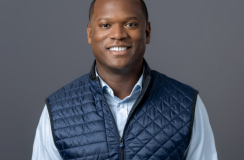
%20-%20thumbnail.png)

.png)
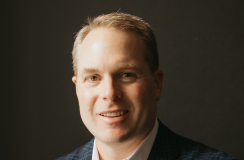
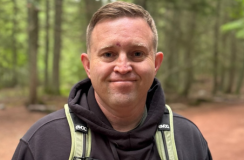


%20-%20thumbnail.png)
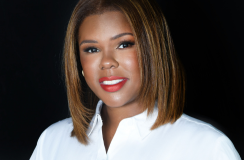
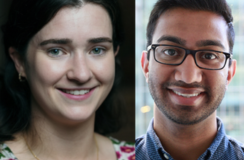
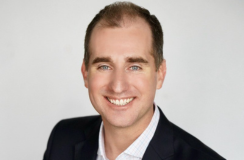
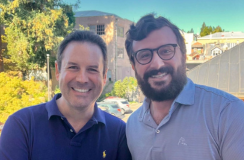
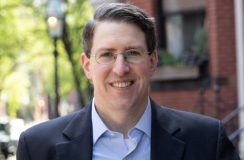


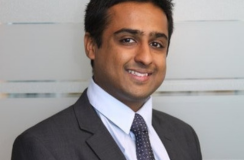
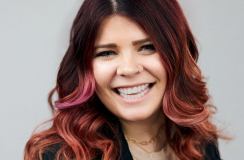
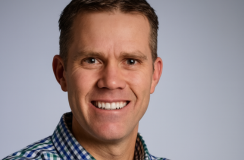




%20-%20thumbnail.png)

